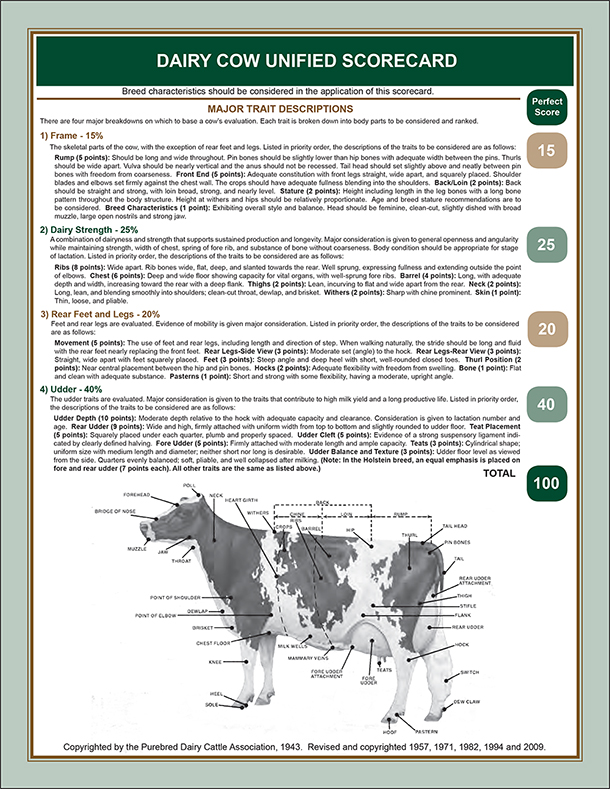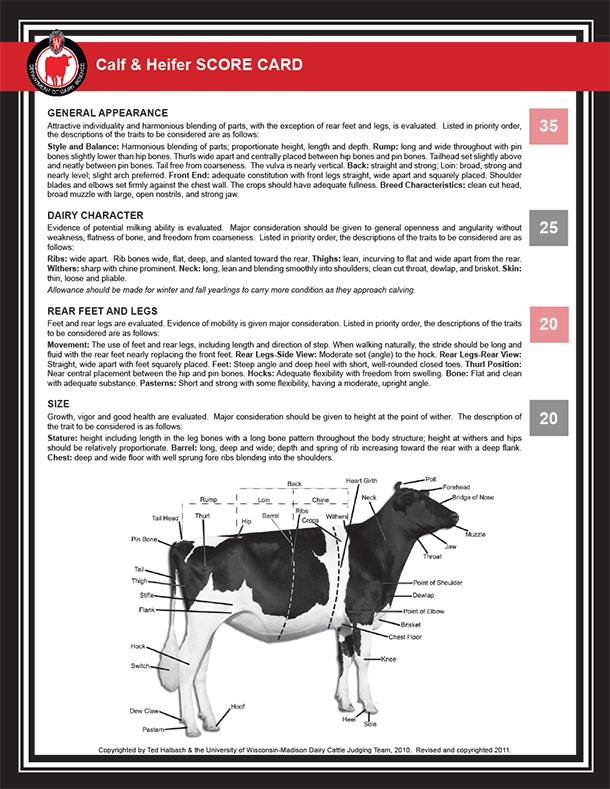At every fitting and showmanship clinic, we ask how many people are involved in dairy judging. Sometimes numerous hands go up, and sometimes just a few. Youth who love working with and showing cattle stand to benefit from a dairy judging program.
Why?
Top five reasons to participate in youth dairy judging:
- Learn what to look for in order to select the project calf that will help you reach show ring goals.
- Dairy judging teaches youth to evaluate strengths and weaknesses of cattle, which can be applied to a pen of heifers from which they may be picking a project animal.
- Learn to think critically, defend a decision and organize thoughts to present your reasons for the placing to a coach.
- Public speaking skills come more easily after presenting multiple sets of reasons to officials and coaches through the years.
- Meet new friends, be part of a team, travel to elite competitions and see the world.
Dairy cow and heifer scorecards
An easy place to start your judging career is to study the Purebred Dairy Cattle Association (PDCA) scorecard for cows (Figure 1) and the calf and heifer scorecard developed by the University of Wisconsin (Figure 2).
Click here or on the image above to view it at full size in a new window.
Click here or on the image above to view it at full size in a new window.
The most heavily weighted trait on the scorecard is udder. Judging teaches youth to place classes and choose project cows based, first and foremost, on the quality of their udder. As part of a dairy judging team, coaches teach about height and width of rear udder, strength of fore udder attachment, teat size and placement, and udder cleft.
Dairy strength, frame, feet and legs are the other three categories to evaluate. Coaches will instruct you on the finer points of each of these areas, teaching students to look for width of chest that carries through to the pins of a cow, correct set to the hock and deep-ribbed, open rib structure that displays dairy strength.
A common judging mistake is to place an entire class on one trait. This is where the scorecard can be helpful. By using the numerical values in the scorecard, youth will find it is easier to place a class when each animal is assigned a score in each category.
How to use the scorecard to select a showmanship animal
We recommend showing heifers in showmanship. So if your goal is to win showmanship at your show, select a heifer that will help you achieve that goal by using the above scorecard.
- Look for a heifer with correct feet and legs; it will be easier to set her up.
- Look for a heifer with a long, clean head and neck that blends smoothly into her shoulder; it will make it easy to keep her head high and her throat pulled.
- Pick a heifer that has a deep, open rib so that a judge can’t miss her dairy character and balance as you enter the ring. Even in showmanship class, first impressions of the animal itself are important.
Whether you have bred generations of your project animals, plan to purchase a heifer for the upcoming show season or if you select your calf from a large pen at a supporting dairy, acquired judging skills will come in handy. Take time in the off-season to learn the scorecards, find out more about judging programs near you and make a plan to add this fantastic program to your dairy résumé.










